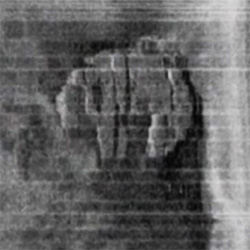The Baltic Sea anomaly

Instinct tells me that, if the Ocean X salvage team had discovered a crashed UFO at the bottom of the Baltic Sea last year, there’d be no Ocean X salvage team this year to talk about it. So when experts on one side opine “pillow basalt” and “marketing ploy” and experts on the other side counter that, whatever it is, it’s switching off electronic equipment and defying conventional explanation, I don’t get too excited.
UFO historian Richard Dolan has expressed concern about the salvage team’s reported plan to sell deep sea tours of the anomaly. Point taken, but one might express similar concerns about his speaking fees and book royalties. Paranormal talk radio host Kevin Smith, who interviewed Ocean X diver Peter Lindberg, says that a massive disinformation campaign is afoot. The mainstream media, he says, is seeking as always to baffle us with bullshit. He says it’s putting words in the mouths of Ocean X team members and harping predictably on the similarity of the sonar images to Han Solo’s Millennium Falcon. At the same time, one might reasonably point out that Smith has interest in shoring up the credibility of his guests.
But forget ufology. Forget Lindberg’s financial aspirations and any ulterior motives that Dolan or Smith might have.
I googled “pillow basalt” just now and looked at a few hundred photos of that phenomenon. None of them resemble what’s at the bottom of the Baltic Sea. Any takers, Scientific American?
The Baltic Sea, I gather, came into being at the end of the last ice age, about 15,000 years ago. Might the Ocean X discovery be a hunter-gatherer construction, one predating even Göbekli Tepe? Any takers, National Geographic?
One of those publications, or some such it seems to me, should have said by now, “Step aside, Ocean X, we’ll handle it from here.” They should be leading the media charge, too, but they aren’t.
What’s wrong with this picture?